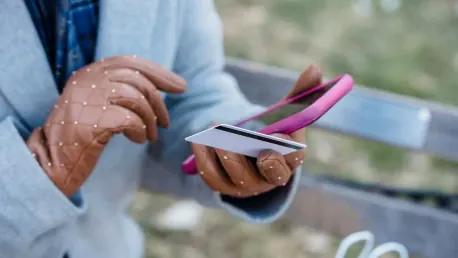Square is a comprehensive payment processing system that many businesses rely on for streamlined transactions. With various services and products, understanding how to use Square might seem daunting at first. Are you selling in person, online, or both, and do you operate from a single location or on the go? Covering these bases will help determine how you configure your Square setup. This detailed guide will walk you through the entire process, from registering to processing your first payment, ensuring you can take full advantage of Square’s capabilities.
1. Register for Square
Registering for Square is as straightforward as creating an email account, starting a Facebook profile, or setting up login credentials for a payment portal. To begin, visit the Square website and click on the “Get Started” button. You’ll need to fill in the requisite personal information, which includes your name, email, and some basic business details. This step is relatively quick, typically taking about ten minutes, akin to most online account setups. It’s crucial to provide accurate information as it ensures that your account is set up correctly, allowing you to make the most out of Square’s features.
Once you’ve provided all the necessary information, Square will send a confirmation email. Following the instructions in this email will verify your account, giving you immediate access to Square’s suite of tools. This preliminary step sets the foundation for everything that follows. Having your personal and business details updated ensures smooth integration with other system services, making your payment process efficient and reliable from the get-go.
2. Link Your Bank Account
Once you’ve completed the initial registration, linking your bank account is the next vital step. This link is crucial as it enables Square to deposit your transaction funds into your bank account. Start by providing your bank account information, which includes your bank name, account number, and routing number. This step may seem straightforward, but it’s essential to ensure accuracy to avoid delays or errors in the verification process, potentially impacting your cash flow.
After entering your bank account details, Square will verify the information. This process can take anywhere from an hour to two full days. During this period, Square makes a small deposit into your account, which you must later confirm to complete the verification process. Verification ensures that your account is legitimate and ready to handle transactions. Once verified, you’re all set to start taking payments, giving you the green light to proceed with setting up your card reader and payment app.
3. Select a Card Reader
Selecting the right card reader is a critical decision that can significantly impact how you conduct transactions. Upon linking your bank account, Square gives you several options. The most basic option is the free magstripe Square Reader, which is shipped to you once you sign up. If you’re looking for something more advanced, consider the upgraded wireless Square Reader. This model supports tap-and-chip payments and provides greater flexibility in accepting various payment methods.
The wireless Square Reader is priced at just under $50 and includes both the Bluetooth reader and the standard aux port magstripe reader. This combination ensures that you can accommodate almost any card payment method, offering convenience to your customers. If you have an iPhone 11 or newer, you can further streamline your operations by using the phone’s built-in Tap to Pay functionality, bypassing the need for a separate card reader entirely. You’ll still need to use the Square app for processing payments, but the Tap to Pay feature integrates seamlessly with the rest of Square’s ecosystem.
4. Install the Square POS App
With your card reader selected, the next step is to install the Square Point of Sale (POS) app, which will serve as the central hub for processing payments. The app is available for download from both the Apple App Store and the Google Play Store. Once downloaded, log in using your Square credentials. This login links your device to your merchant account, ensuring that all payments processed through the app are correctly attributed to your business.
The Square POS app is designed to be intuitive and user-friendly, making it easy for users of all tech levels to navigate. From the app, you can manage your entire payment process, from ringing up sales to sending digital receipts to customers. The app also allows you to access various reports and insights, providing valuable data to help you understand your sales trends and make informed business decisions. This seamless integration makes the Square POS app an indispensable tool for managing your business’s financial transactions.
5. Organize Your Inventory
Organizing your inventory within Square can greatly simplify your sales process and help track sales numbers more effectively. While this step is not mandatory or time-sensitive, it’s highly beneficial, especially if your business deals with standardized products. From your account online or via the Square app, you can create inventory items, making it easier to manage and monitor sales. This feature is particularly useful for businesses selling mass-produced consumer goods, where each item differs but all units of a given item are identical.
The process is straightforward: input the details of each product, including its price, description, and any variations such as sizes and colors. This categorization allows for smoother transactions as you can quickly select items from your inventory during a sale, rather than inputting details manually each time. If you provide services rather than physical products, organizing your inventory can still be valuable. For instance, standardizing your service offerings with fixed prices can streamline invoicing and payment processes, making your overall operations more efficient.
6. Pair Your Card Reader
Pairing your card reader with the Square app is a necessary step if you opted for the Bluetooth reader. This process is akin to connecting headphones or other Bluetooth devices to your phone. Start by opening the Square app and navigating to Settings, then Hardware, and finally Square Card Readers. Once there, press the power button on your card reader to activate pairing mode. The app will detect the reader and display it under My Hardware once the pairing is complete.
For users who chose the plug-in reader or the Tap to Pay option on newer iPhones, this step is unnecessary. However, ensuring that your reader is recognized by the app is still important. You can navigate to the My Hardware section within the app to verify that your reader is being detected properly. Once confirmed, your card reader is ready to process transactions, offering a seamless and reliable payment experience for both you and your customers.
7. Begin Processing Payments
The moment of truth comes when you start processing payments. Initially, your only option might be manual card entry, which Square charges a higher processing fee for. It’s advisable to avoid this method if possible. Instead, decide how you’ll primarily take payments. If you plan on processing most payments in person, invest in the necessary POS hardware and link it. For online payments, set up your online portal accordingly. If invoicing is your preferred method, access the invoicing section of the platform to get started.
To process a transaction, open the Square app and ensure your selected reader is ready. If you’ve set up a product catalog under your inventory, select items from it, or manually input the item and price if needed. Direct your customer to swipe, tap, or chip their card, and your phone will handle the rest, registering the transaction and initiating the payment process. Successfully processing your first card-present transaction marks a significant milestone in setting up your Square system.
8. Process a ‘Card-Not-Present’ Payment with Square
Sometimes, customers may not have their physical card on hand, necessitating a ‘card-not-present’ transaction. Square accommodates this by allowing you to process payments using the customer’s card information manually, although at a higher processing fee. After ringing up the sale as usual, select the “Phone Order” option within the app. This will prompt you to enter the card details manually, including the card number, expiration date, CVV, and billing ZIP code. Once the information is entered, hit “Charge” to process the payment.
This functionality is useful for over-the-phone orders, allowing businesses to cater to customers who cannot make in-person transactions. It also serves as a backup method when the card reader fails to read a worn-out or damaged card. Having this flexibility ensures that you can complete sales regardless of the physical presence of the customer’s card, maintaining consistent business operations and customer satisfaction.
9. Handle Offline Payments
Even without an active internet connection, Square allows you to collect payments from customers by enabling offline mode. To activate this, navigate to Settings in your Square app, then select Offline Mode and toggle Allow. This feature logs customer transactions locally on the device, storing them until your device reconnects to the internet. Once reconnected, these transactions are synced with Square’s system and processed normally.
It’s important to note that offline mode can only be used for up to 24 hours. Beyond this period, the device will not accept further card transactions until it regains an internet connection and syncs with the Square system. This limitation is designed to ensure the security and accuracy of transactions. Offline mode is particularly useful for businesses operating in areas with unreliable connectivity or during temporary outages, ensuring that sales can continue uninterrupted.
10. Send Invoices via Square
Square makes it easy to send invoices to your customers, allowing you to manage transactions even when they cannot be processed in person or online. To send an invoice, open the Square app or log in to your Square Dashboard. Go to the Invoices section and click “Create Invoice.” Enter the necessary details, such as the customer’s email address, the items or services being billed, and the due date. Once you’ve filled in all the information, click “Send” to deliver the invoice to the customer’s email.
Customers can pay the invoice directly through the link provided in the email, and you can track the payment status within your Square Dashboard. This feature is especially beneficial for service-based businesses that may need to bill clients after completing a job. Sending invoices through Square provides a convenient and professional way to manage payments, helping you maintain cash flow and stay organized.
In conclusion, Square is a robust payment processing system that many businesses depend on for smooth and efficient transactions. With its array of services and products, learning how to use Square initially might be intimidating. Whether you’re selling in person, online, or a combination of both, and regardless of whether you operate from a fixed location or while on the move, understanding your specific needs helps in configuring your Square setup effectively. This comprehensive guide is designed to walk you through the entire process, from the initial registration to handling your very first payment, ensuring you leverage all of Square’s features to the fullest. You’ll learn how to set up your account, customize your point of sale (POS) system, integrate your online store, and utilize Square’s various tools for customer management, inventory tracking, and sales reporting. We’ll also cover how to use Square’s hardware, including card readers and terminals, for in-person sales. With this guide, you’ll discover how Square’s offerings can streamline your payment processes, making your business operations more efficient and your life a lot easier.









